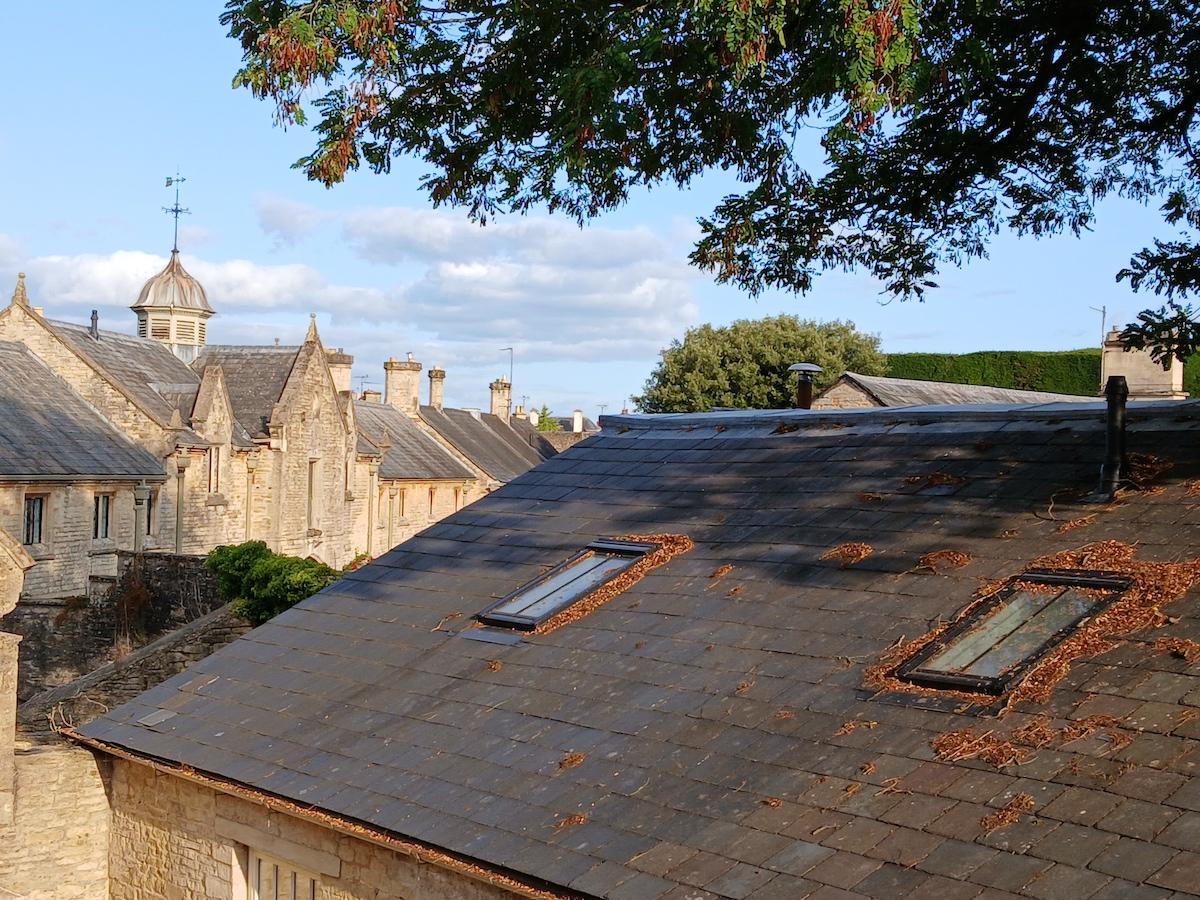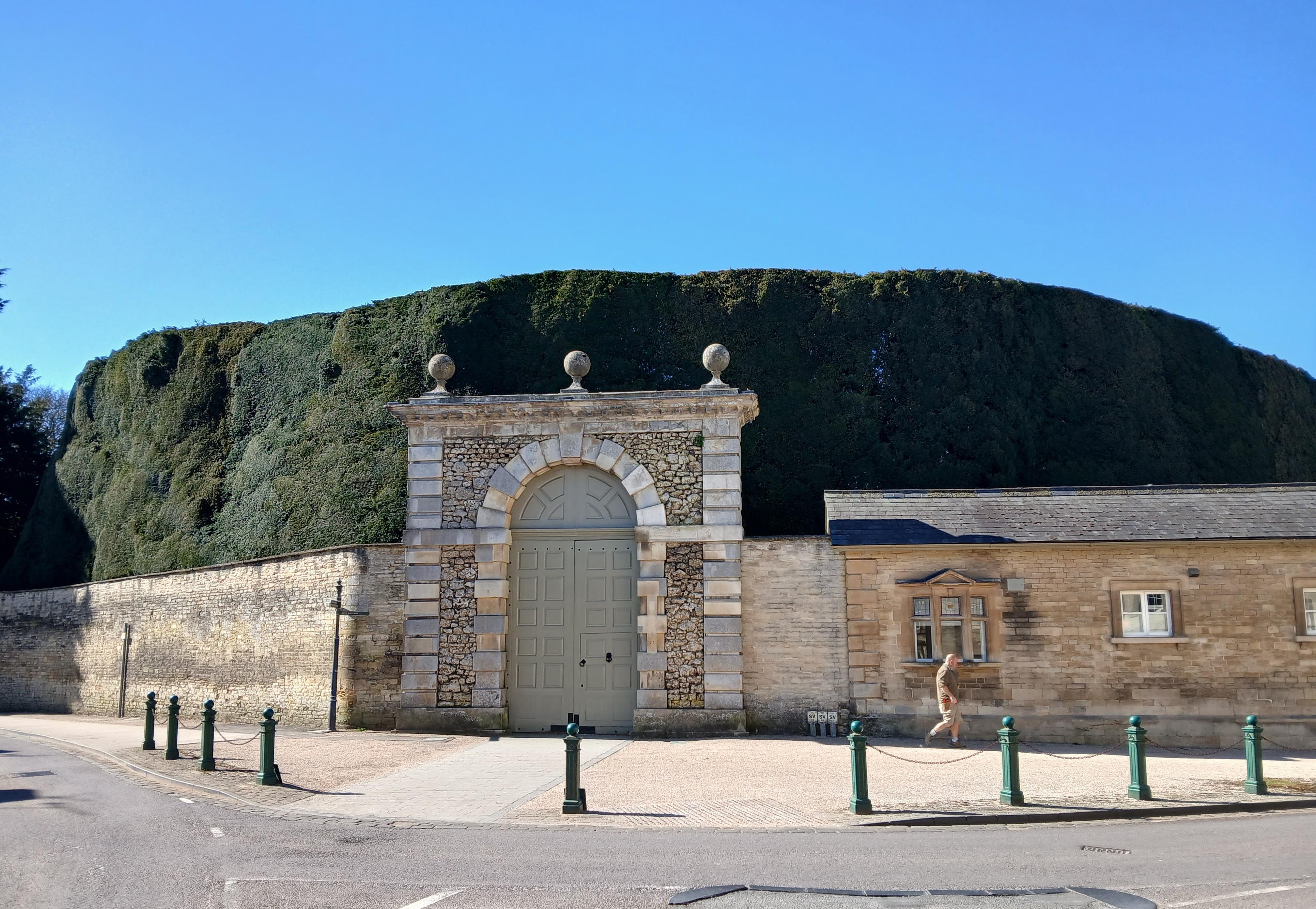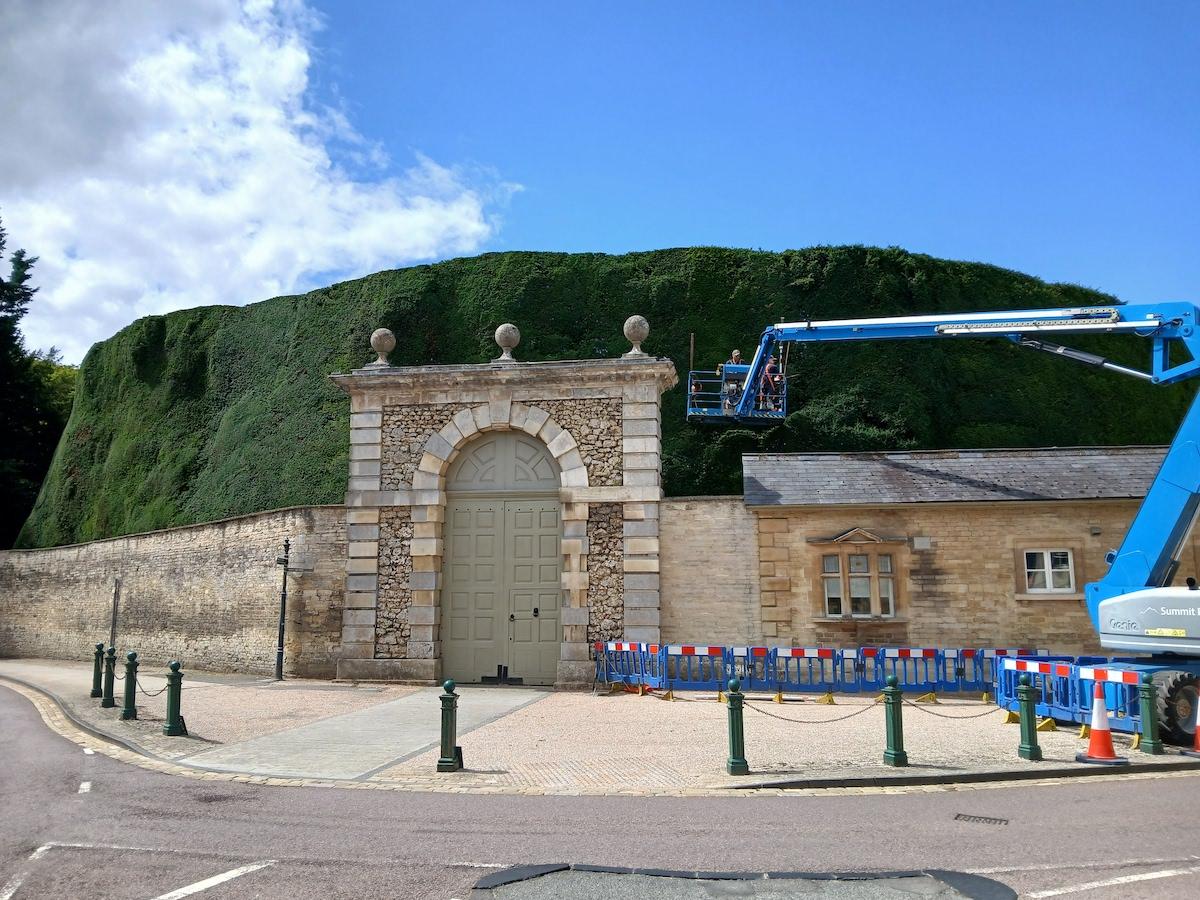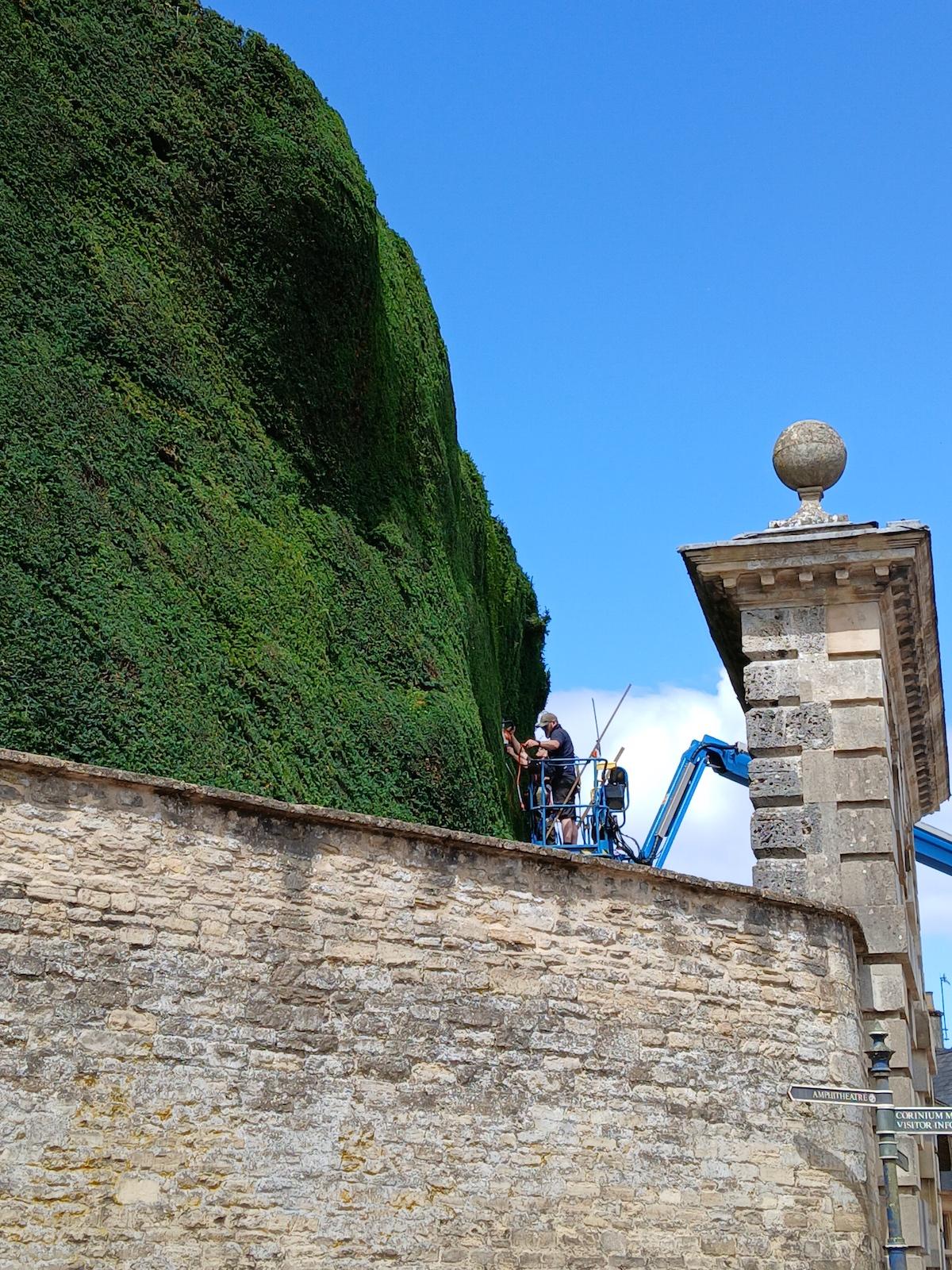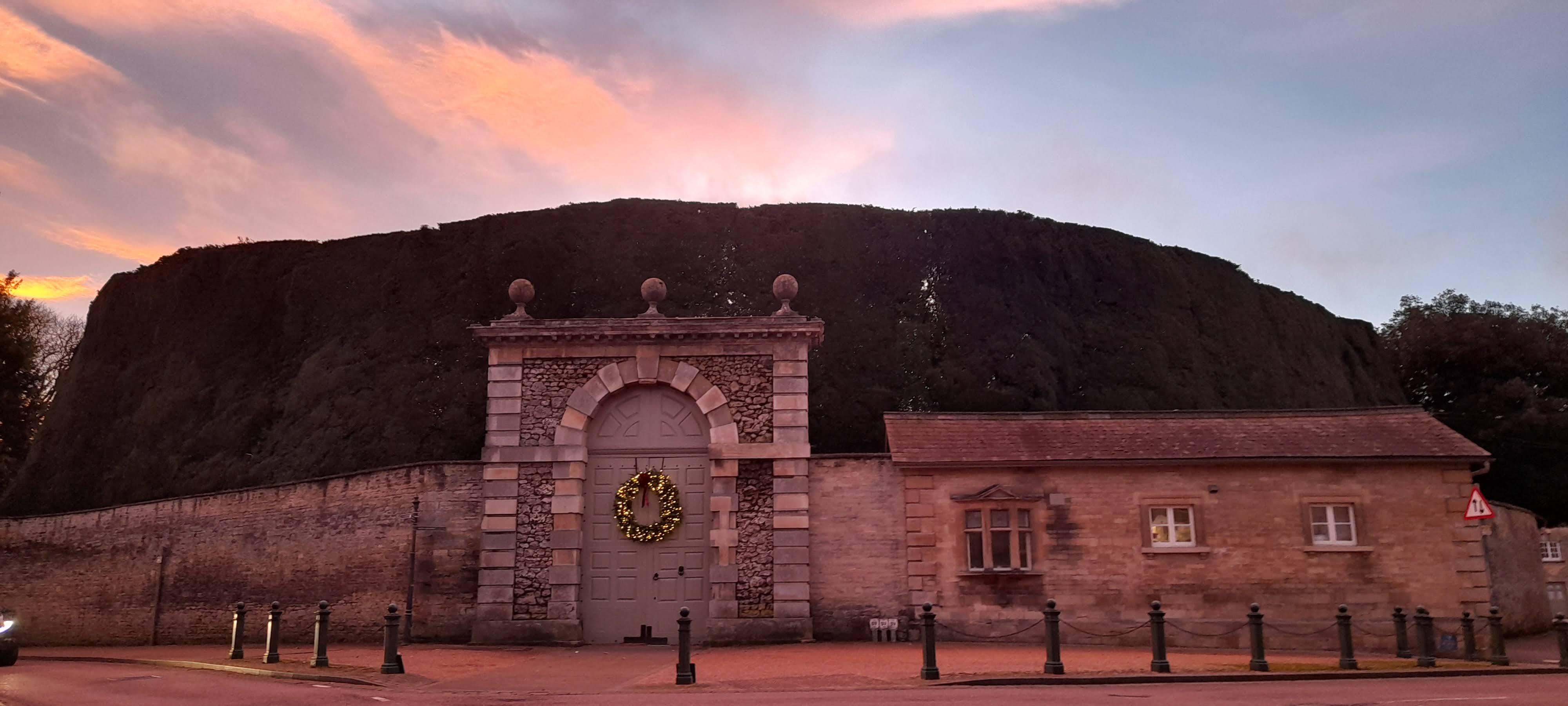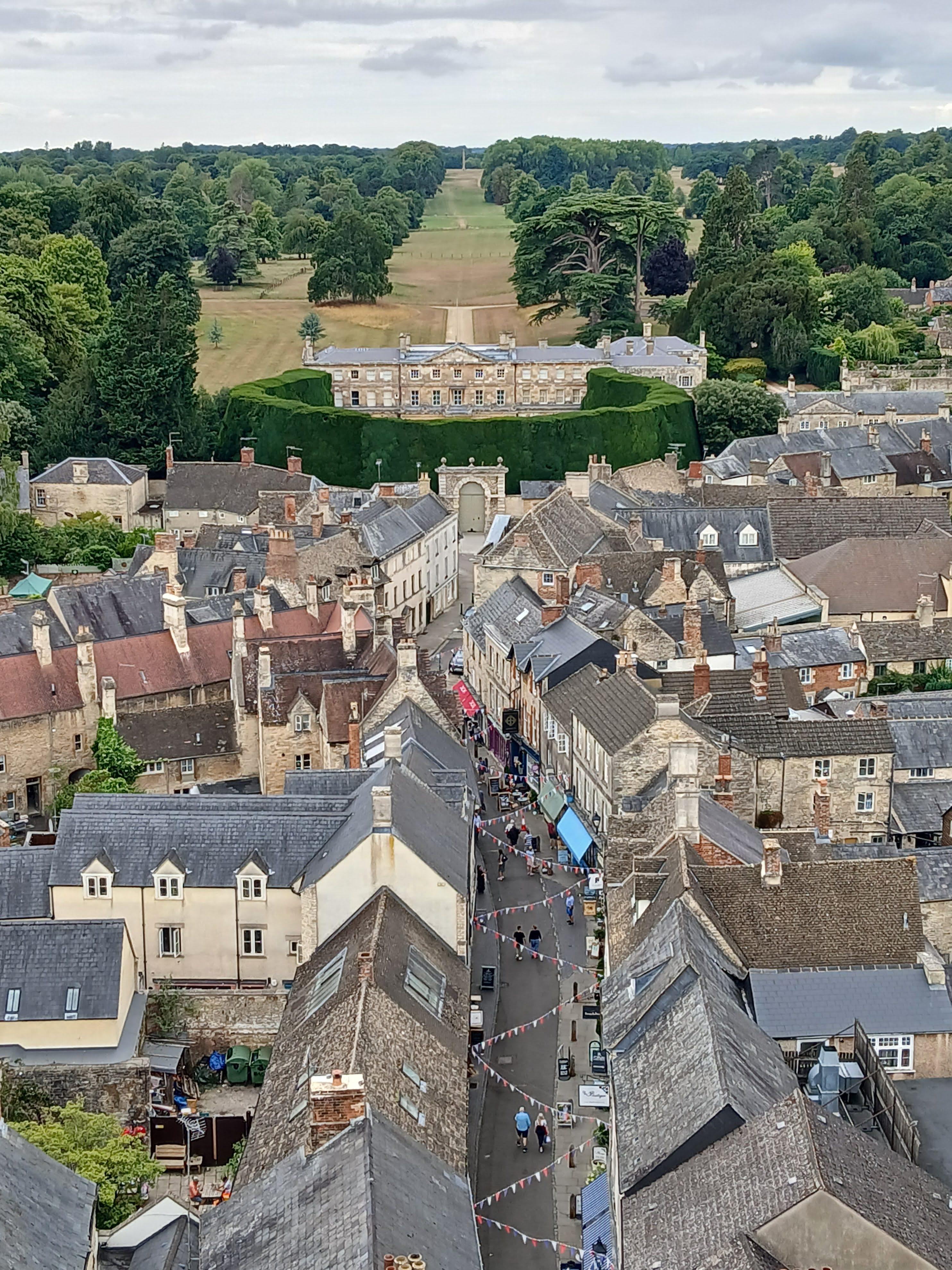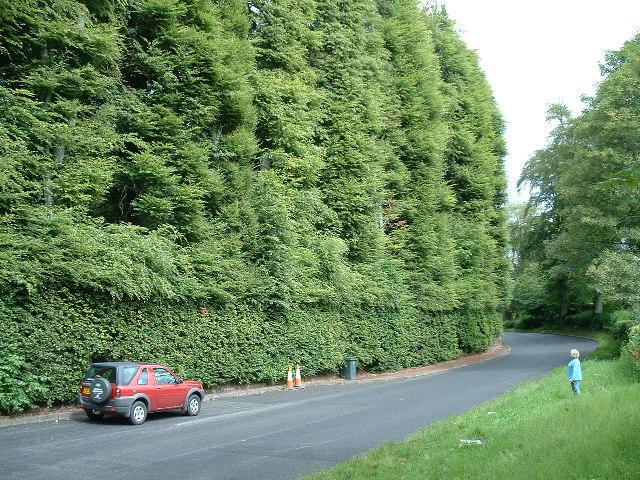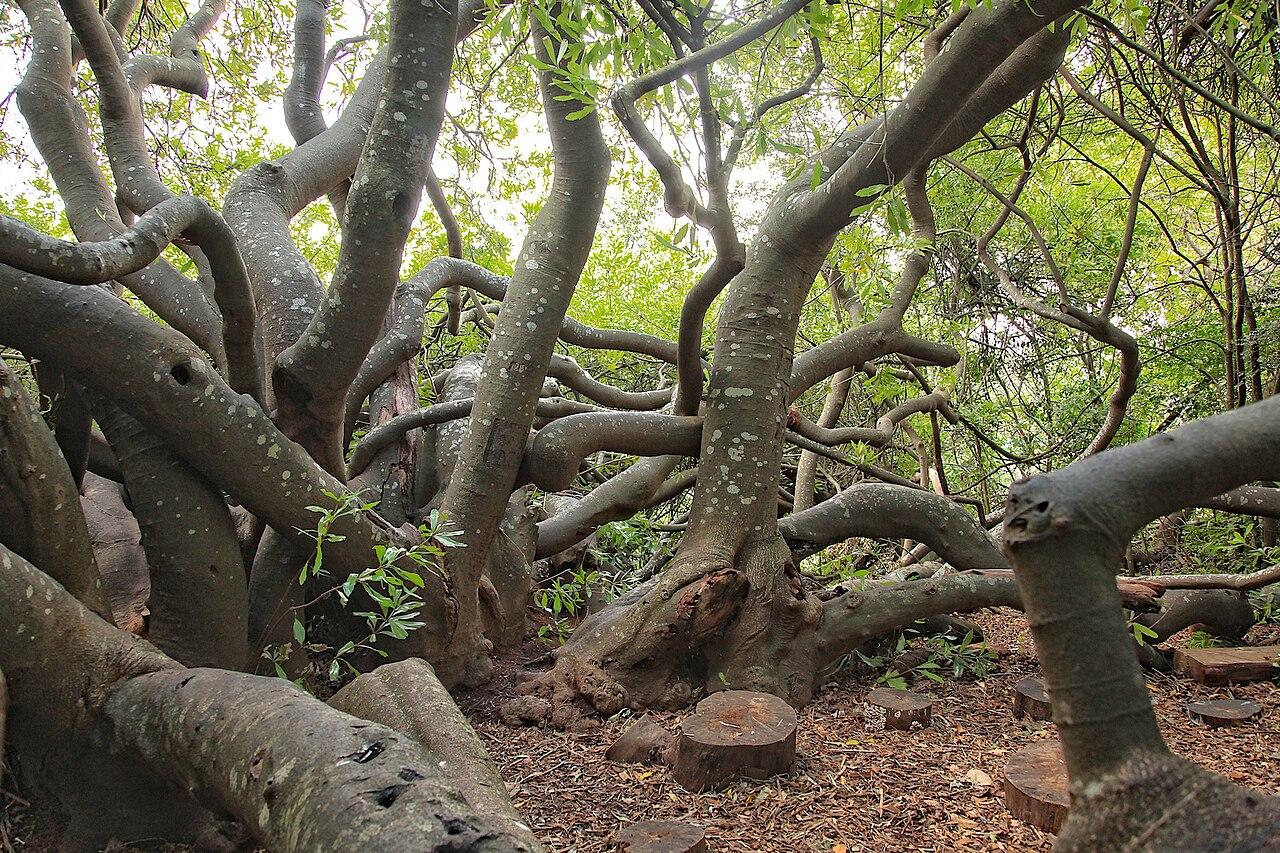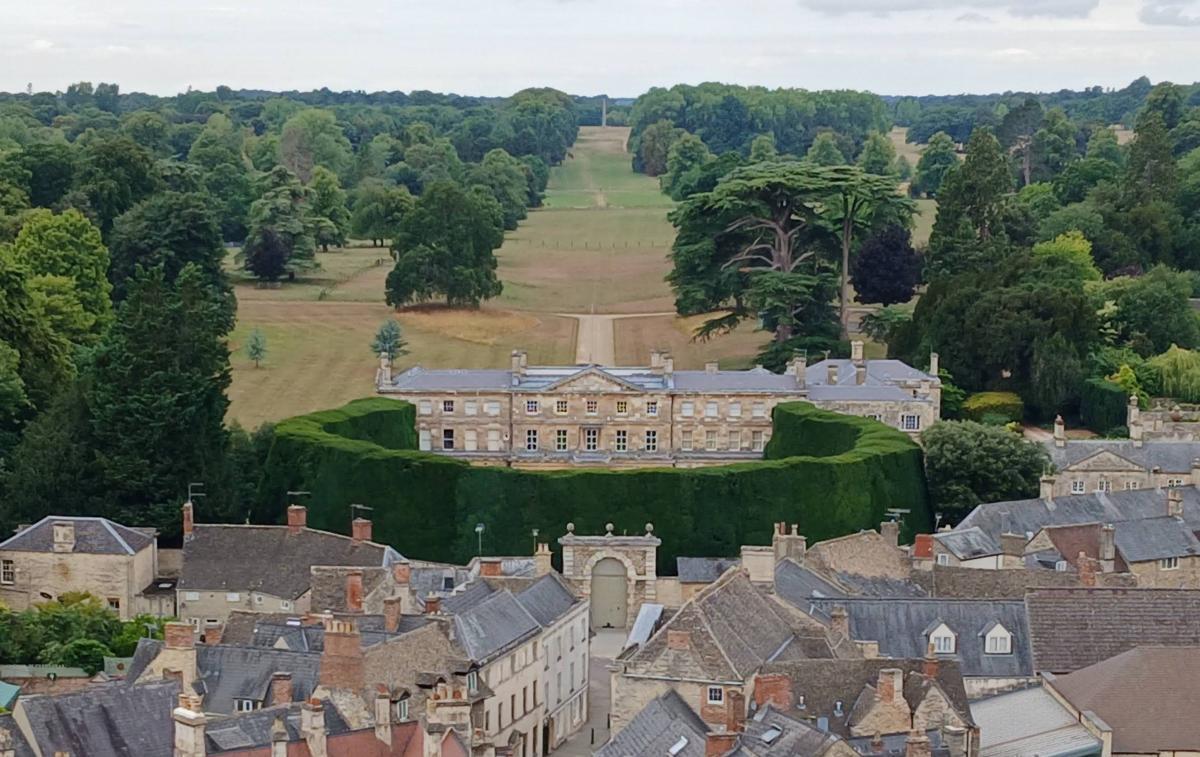
Disclaimer: Any views expressed by individuals and organisations are their own and do not in any way represent the views of The Heritage Portal. If you find any mistakes or historical inaccuracies, please contact the editor.
From my window at the Old Coach House on the Bathurst Estate in Cirencester, I have a daily view of a huge green wall or at least a hint of it. It’s a prominent boundary for Cirencester Park, the seat of the Bathurst family, and a feature that draws the crowds. It is a key stop on walking tours of the town and has been featured in dozens of articles over the years.
The view from my window. To the right of the photo is the 'green wall'
Since moving to Cirencester, I've had the chance to learn more about this remarkable hedge, which turns out to be a significant landmark, recognised beyond Cirencester. It holds the record for being the world's tallest yew hedge, a detail confirmed by Guinness World Records. Planted in 1720 by the first Earl Bathurst, it is a considerable structure, measuring approximately 13.1 metres in height, 155.5 metres in length, and 4.5 metres in width.
The record-breaking hedge
The house itself is a Grade II listed building. The first Earl Bathurst, who inherited the estate in 1704, dedicated himself to its rebuilding and the creation of the parkland. He was a friend of the poet Alexander Pope, who not only visited but also advised on the garden layout.
The hedge is trimmed once a year, with the work typically taking place in August. This is a task that requires a team of people and specialised equipment to handle the size of the hedge. For a time, the cuttings had a purpose beyond gardening. They were collected for the pharmaceutical industry, where they contained a compound used in a chemotherapy drug. As you can see from the photographs below, modern methods are a lot safer than those used generations ago.
New and old methods of trimming the giant hedge
The hedge can be photographed from multiple perspectives. From the ground, its height is clear. From the top of the church tower, you can observe how it fits into the wider landscape. From that height, you can see how the stately home (surrounded by the hedge) lines up with the straight path that leads to a monument dedicated to Queen Anne.
The gate and hedge at Christmas
The view from the Cirencester Church Tower
The Cirencester hedge is the highest yew hedge, but it is not the tallest hedge in the world. That title belongs to the Meikleour Beech Hedge in Scotland. It stands about 30 metres high and is 530 metres long. It was planted in 1745.
Meikleour Hedge (Wikipedia)
While not known for its height and size, South African readers may be aware of another historical hedge: Van Riebeeck's Hedge in Kirstenbosch. Planted in 1660, this wild almond hedge was an early boundary marker for the Dutch settlement at the Cape and now has heritage status.
Section of Van Riebeeck's Hedge (Wikipedia)
This is one subject I never thought I would get into. Who thought that hedges could be so fascinating.
Comments will load below. If for any reason none appear click here for some troubleshooting tips. If you would like to post a comment and need instructions click here.

